Black Travelers in Budapest – If you’re a foodie looking for a new culinary destination, Budapest should definitely be at the top of your list. Beyond the traditional goulash, Hungary has a thriving culinary culture, fantastic street food scene, and incredible food markets. In this article, we’ll take you on a food tour of Budapest and show you why it’s a hidden gem for food lovers.
From tasting Hungarian sausages and pastries to trying Hungarian liqueur and exploring the city’s ruin bars, there’s something for every foodie in Budapest. We’ll also share tips for navigating the city’s food markets and provide recommendations for other must-see spots. So grab your appetite and let’s dive into Budapest’s delicious food scene.
Key Takeaways
- Budapest is a hidden gem for food lovers, with a thriving culinary culture, a fantastic street food scene, and incredible food markets.
- The city offers a variety of unique foods and experiences, including tasting Hungarian sausages and pastries, trying Hungarian liqueur, and exploring the city’s ruin bars.
- Beyond the food scene, Budapest has a rich history and culture, with must-see spots like Liberty Square Park and the House of Terror Museum.
Black Travelers in budapest – Budapest Tips
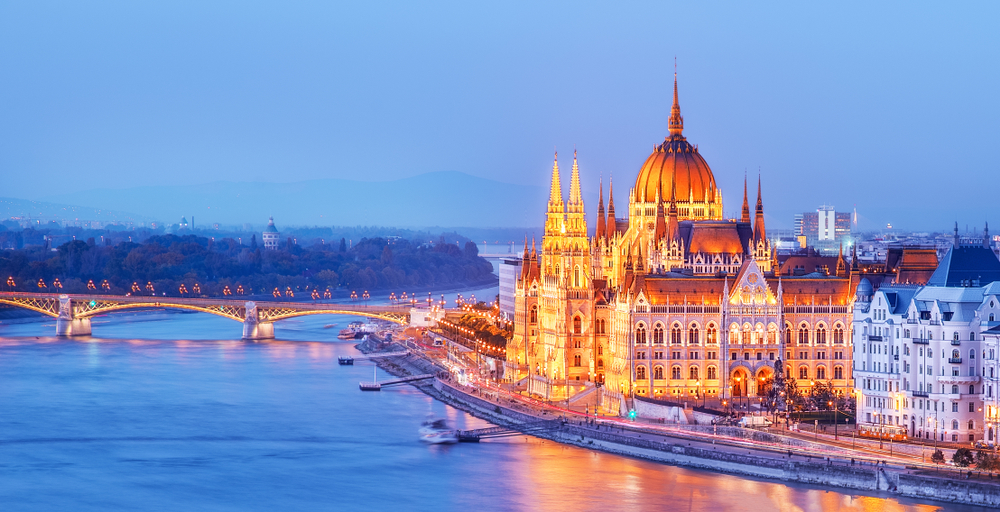
As a Black traveler, it’s important to be aware of the cultural differences and potential challenges you may face when visiting a new destination. Budapest is a diverse and welcoming city, but it’s still important to be prepared and informed before your visit.
One thing to note is that Hungary has a relatively small Black population, so it’s possible that you may attract some attention while exploring the city. However, this attention is usually friendly and curious, rather than hostile or negative.
It’s also important to be aware of the potential for language barriers, as many Hungarians may not speak English fluently. Consider bringing a translation app or phrasebook to help you communicate with locals.
When it comes to dining and food options, Budapest has a vibrant culinary scene with plenty of options for all tastes and preferences. However, it’s important to note that traditional Hungarian cuisine may not be as diverse as other cuisines, so you may need to research restaurants offering more diverse options.
In terms of safety, Budapest is generally a safe city for travelers. However, being aware of your surroundings is always important, especially when exploring unfamiliar areas or traveling alone at night. Stick to well-lit, populated areas and avoid carrying large amounts of cash or valuables with you.
Budapest is a welcoming and diverse city with plenty of exploration and adventure opportunities. With a little preparation and awareness, you can have a safe and enjoyable trip as a Black traveler.
Hungarian Food
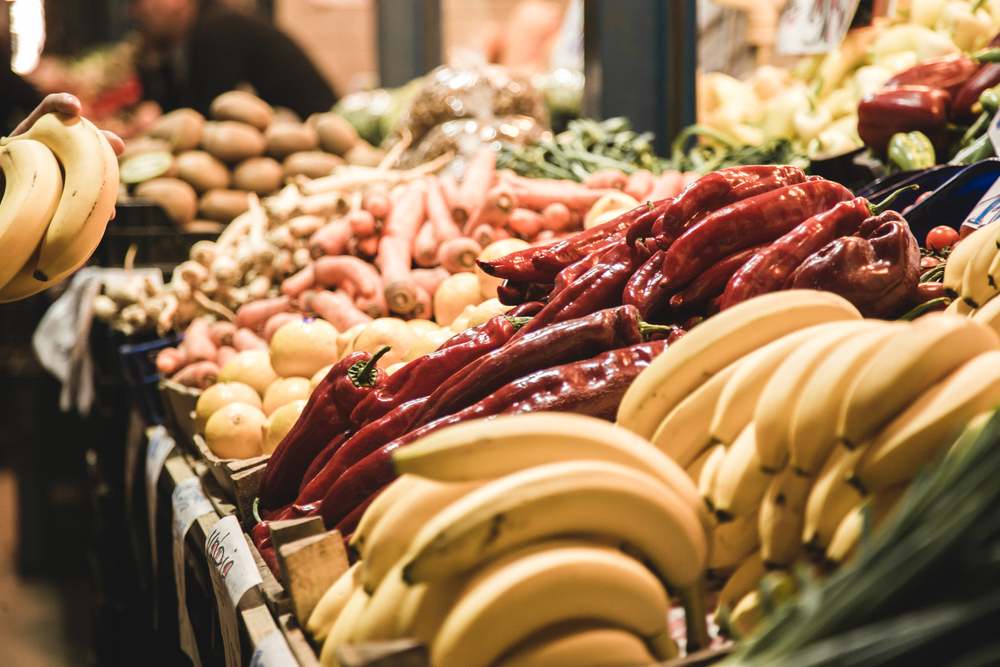
When you think of Hungarian food, the first thing that probably comes to mind is goulash. But trust me, there’s a lot more to Hungarian food than just goulash. Budapest is a real hidden gem for food lovers, whether you love street food or traditional dishes, cooking classes or food markets. You’ll find that Budapest is a must-visit destination for any foodie.
One of the best places to experience Hungarian food is at the Great Market Hall. Here, you can try out different foods that are unique to Budapest. Highly recommended is the dried smoked sausage, made from the meat of the mangalica pig, which is known for its low cholesterol content. It’s the most typical topping on lángos, a deep-fried dough topped with sour cream, cheese, and garlic spread. It’s a must-try dish when in Budapest.
Another popular dish is chimney cake, which is originally from Transylvania but has become a Hungarian favorite. It’s a sweet snack that goes well with coffee and is now available around most Christmas markets in Europe.
When it comes to drinks, pálinka is a must-try. It’s a fruit brandy made from only the fruit, not added sugar or alcohol, and contains extracts of 50 different herbs. It was designed to cure the emperor’s stomach at the time and then became a popular drink.
Overall, Hungarian food is a unique blend of flavors and traditions that are worth exploring. Whether you’re a foodie or just looking to try something new, Budapest has plenty to offer in terms of culinary experiences.
Food Tour in Budapest
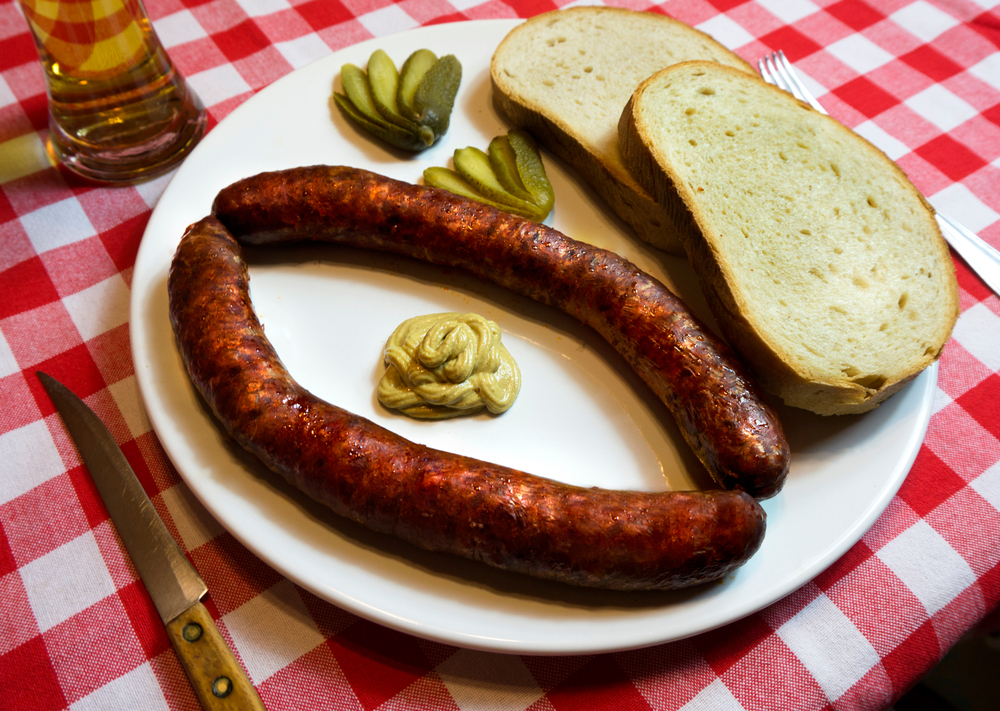
If you are a food lover, Budapest is a must-visit destination. The city offers a thriving culinary culture, fantastic street food scene, and incredible food markets. During our visit to Budapest, we embarked on a food tour to try out different foods unique to the city.
Our first stop was for a shot of palinka, a traditional Hungarian fruit brandy. It has extracts of 50 different herbs and is advertised as a stomach strengthener. We also tried scones or savory biscuits, which had a nice and savory flavor, making them a perfect chaser to the palinka.
Next up was the plum pickle, which had a delicate flavor with a perfect balance of plum and garlic. We also tried all sausages, which are called Kolabasz in Hungary. The pork sausage had a nice taste and was a hit among our group.
At the Great Market Hall, we highly recommend trying the dried smoked sausage, which is the most typical topping. It is served with sour cream cheese and garlic spread and is a tremendous and exhilarating experience.
Chimney Cakes
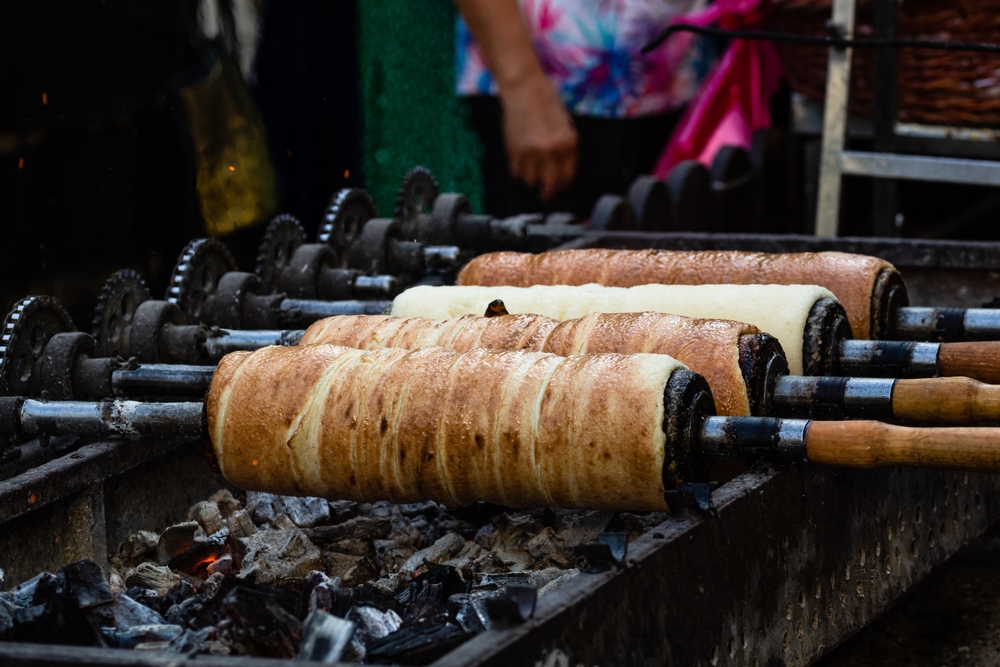
We also tried chimney cakes, a sweet snack originally from Transylvania. They became popular in Hungary after the fall of communism, and locals grab them on their way to work. However, opportunistic vendors in Prague started selling them as a Czech specialty, which the locals hated.
Overall, Budapest is a hidden gem for food lovers, and we highly recommend trying out the city’s unique foods.
Tasting Hungarian Spirit
If you’re a foodie, Budapest is a must-visit destination. The city is a hidden gem for food lovers, offering a wide range of unique and delicious dishes. But it’s not just about the food – Budapest is also home to some amazing drinks, including the famous Hungarian spirit, Palinka.
Palinka is a traditional fruit brandy that’s been produced in Hungary for centuries. It’s made by fermenting and distilling various fruits, including plums, apricots, and pears. The result is a strong, clear spirit that’s typically served as a digestif.
During a food tour of Budapest, we had the opportunity to taste Palinka and learn more about its history and production. We tried a few different varieties, including plum and apricot Palinka, and were impressed by the smoothness and complexity of the flavors.
One of the most interesting things we learned about Palinka is that it was originally created as a medicinal drink. It was believed to have healing properties and was often used to cure stomach ailments. Today, Palinka is enjoyed more for its taste than its health benefits, but it’s still a beloved part of Hungarian culture.
If you’re interested in trying Palinka for yourself, you can find it at most bars and restaurants in Budapest. It’s typically served in small glasses and is best enjoyed as a post-dinner drink. Just be warned – Palinka is strong, so sip it slowly and savor the flavors.
Market Hall Tips
When visiting the Great Market Hall in Budapest, it’s important to keep a few tips in mind to make the most of your experience. First and foremost, be prepared to pay for the bathrooms regardless of which floor you use. Using the upstairs bathroom is recommended as it tends to be better.
When it comes to food, the Great Market Hall is a must-visit destination for any foodie. With traditional dishes, street food, and cooking classes, there’s something for everyone. Consider trying out the different foods that are unique to Budapest for a truly authentic experience.
One of the most popular foods to try at the Great Market Hall is the dried smoked sausage, known as kolbász. This sausage is made from the meat of the mangalica pig, which is known for having less cholesterol than other types of pork. It’s typically served with sour cream, cheese, and garlic spread.
If you’re looking for something sweet, consider trying a chimney cake, a traditional Transylvanian dessert that has become popular in Hungary. It’s a sweet snack that goes well with coffee and is available at most Christmas markets in Europe.
Overall, the Great Market Hall is a must-visit destination for any food lover visiting Budapest. With a wide variety of traditional dishes and street food to try, you’re sure to find something to satisfy your taste buds.
Tasting Hungarian Sausages
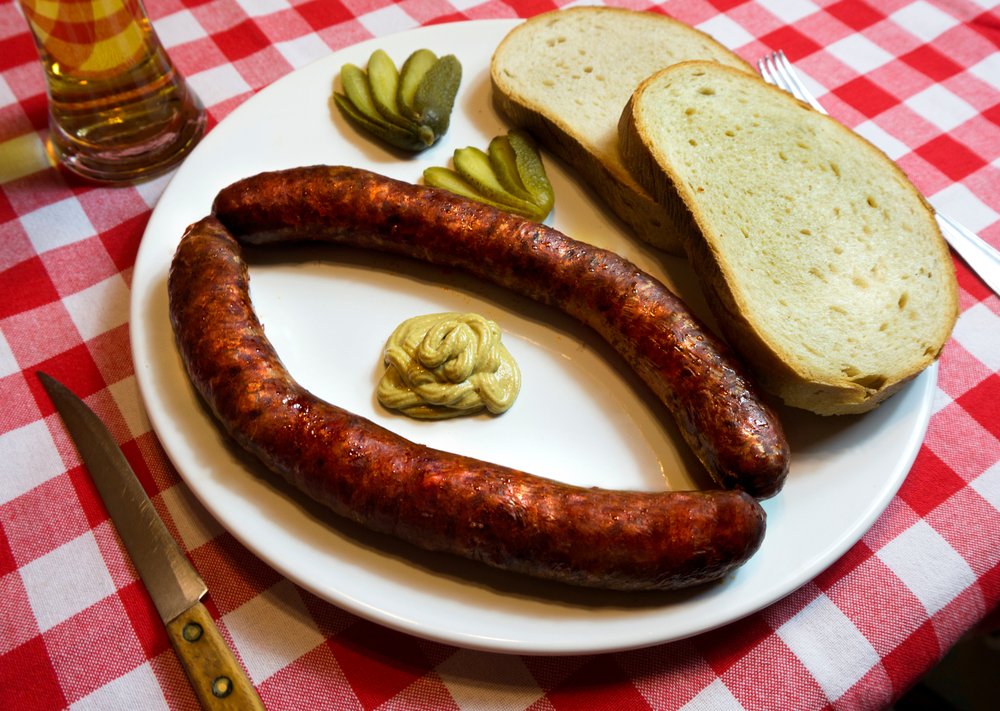
When it comes to sausages in Hungary, they are all called “kolbász”. The most popular one is made from pork, and it has a really nice flavor. During our food tour in Budapest, we had the opportunity to taste different types of kolbász, and they were all unique in their own way.
One of the kolbász we tried was the dried smoked sausage made from mangalica pig. This pig has less cholesterol, making it a healthier option. The dried smoked sausage is typically served on bread with sour cream, cheese, and garlic spread. It’s a perfect snack to have on the go.
Another kolbász we tried was the spicy sausage, which had a nice kick to it. It’s perfect for those who love spicy food. We also tried a sausage made from beef and pork that had a subtle flavor and was not overpowering.
If you’re a sausage lover, Budapest is your perfect destination. There are so many different types of kolbász to try, and each one has its own unique flavor. Make sure to add a visit to the food markets to your itinerary, where you can find a variety of kolbász to take home as souvenirs.
Pro tip: When visiting the Great Market Hall, make sure to have cash ready for the bathrooms. The upstairs bathroom is recommended to be better than the one on the main floor.
Overall, Hungarian sausages are a must-try when visiting Budapest. They are a delicious and unique part of the Hungarian culinary culture.
Tasting Hungarian Pastries

As a food lover, you must try the delicious pastries in Budapest. Hungarian pastries are known for their unique flavors and textures. In this city, you can find various pastry shops that offer a wide range of sweet treats.
One of the most popular Hungarian pastries is chimney cake or kürtőskalács. It is a traditional Transylvanian pastry made of sweet yeast dough that is wrapped around a cylindrical spit, rolled in sugar, and then baked over an open flame. It is crispy on the outside and soft on the inside, with a sweet and buttery flavor. You can find it in many flavors, such as cinnamon, vanilla, chocolate, and more.
Another must-try pastry is rétes, also known as strudel. It is a thin pastry filled with sweet or savory ingredients. The sweet version is usually filled with apple, cherry, poppy seed, or cottage cheese, while the savory version is filled with cabbage, mushroom, or meat. It is crispy and flaky on the outside and soft and creamy on the inside.
If you are a fan of creamy and cheesy pastries, you should try túrós táska. It is a small pastry filled with sweetened cottage cheese, sour cream, and raisins. It has a soft and creamy texture and a sweet and tangy flavor.
In conclusion, tasting Hungarian pastries is a must-do activity for any foodie in Budapest. With so many options to choose from, you will surely find a pastry that satisfies your taste buds.
Tasting Hungarian Liqueur
As a foodie, you can’t leave Budapest without trying the Hungarian liqueur, Unicum. This liqueur is made from a secret recipe of over 40 herbs and spices and has been produced in Hungary since 1790. Initially created to cure the emperor’s stomach, it quickly became a popular drink among Hungarians.
When you taste Unicum, you’ll notice its unique and complex flavor. It has extracts of 50 different herbs, which gives it a distinctive taste that’s hard to describe. Some people say it’s similar to Jägermeister, but it’s really in a league of its own.
One of the best ways to enjoy Unicum is to take it as a shot. When you do, you’ll feel the warmth spread through your body and taste the different herbs and spices. It’s a great way to start a night out in Budapest.
If you do not like shots, you can also try Unicum mixed with other drinks. For example, you can mix it with tonic water and a slice of lemon for a refreshing and unique cocktail. Mix it with orange juice or grapefruit juice for a fruity twist.
When you’re in Budapest, make sure to visit the Unicum Museum to learn more about the history of this iconic Hungarian liqueur. You can also buy a bottle to take home with you so you can continue to enjoy it long after your trip to Budapest is over.
In conclusion, Unicum is a must-try for any foodie visiting Budapest. Its unique flavor and history make it a truly special drink that you won’t find anywhere else. So, add it to your list of things to taste while in Budapest.
The Ruin Bars
If you’re looking for a unique nightlife experience in Budapest, the Ruin Bars are a must-visit destination. These bars are located in abandoned buildings and courtyards throughout the city, offering a truly unique atmosphere you won’t find anywhere else.
The first Ruin Bar, Szimpla Kert, opened 19 years ago and has since become a popular attraction, attracting more than one million visitors per year. Rather than renovating the buildings, the owners maintained their trademark look by spraying the walls with fixer solutions to prevent further decay.
Each Ruin Bar has its own unique vibe, but they all offer a laid-back atmosphere where you can enjoy a drink and soak up the eclectic surroundings. Many of the bars feature live music, art installations, and other forms of entertainment.
One of the most popular drinks to try at the Ruin Bars is the Hungarian specialty, Palinka. This drink was originally designed to cure the emperor’s stomach and is made from extracts of 50 different herbs. It’s definitely worth trying if you’re looking for a taste of traditional Hungarian culture.
The Ruin Bars are a great way to experience Budapest’s unique nightlife scene. Whether you’re looking for a relaxing evening with friends or a night out on the town, these bars offer something for everyone.
City Tour on Pedicab
If you’re looking for a unique way to explore Budapest, a city tour on a pedicab is a great option. During the tour, you can see the entire city, including both Buda and Pest. The city’s two sides have distinct differences, with Buda being more hilly and upscale, while Pest is more lively and has a great nightlife.
We noticed the different vibes on either side as we crossed the bridge. The tour gave us a great perspective on the city’s history and politics, and our photographer, who is also a political journalist, provided us with some interesting insights.
One of the tour’s highlights was Liberty Square Park, where we saw a memorial commemorating the Soviet soldiers who lost their lives while liberating Hungary from Nazi Germany. The park also had a monument that symbolized Hungary and its innocence during the Holocaust, which has been controversial recently.
The pedicab tour was a great way to see the city and learn about its history and culture. We highly recommend it to anyone visiting Budapest.
Cooking Class in Budapest
You can also try a cooking class and learn how to prepare traditional Hungarian dishes. The class is a fun and interactive way to experience the local culture and cuisine.
You will start by making a refreshing fruit soup called “gyümölcsleves,” with only fruit and no added sugar or alcohol. It’s a perfect summer dish and is often served as a dessert. You will also learn how to make “palacsinta,” a Hungarian version of French crepes, which are thinner and slightly different in texture.
Next, you will prepare “töltött káposzta,” a cabbage roll filled with ground pork, rice, and spices. This dish is a staple in Hungarian cuisine and is often served in winter. We also made “töltött paprika,” a similar dish made with bell peppers instead of cabbage.
Finally, you will finish the class by making “rétes,” a traditional Hungarian dessert similar to strudel. We used walnuts and apples as filling and learned how to properly roll out the dough to achieve the perfect flaky texture.
The cooking class was a great way to learn about Hungarian cuisine and culture. We highly recommend taking a class if you’re a foodie looking to experience something unique during your visit to Budapest.
Liberty Square Park
As you walk through Liberty Square Park in Budapest, you’ll be struck by the interesting mix of political and historical monuments that dot the landscape. The park reflects Hungary’s complicated past and its ongoing efforts to navigate its place in the world.
In the center of the park, you’ll find a memorial to the Soviet soldiers who lost their lives while liberating Hungary from Nazi Germany. Surrounding the monument are statues of U.S. presidents, including Ronald Reagan and George Bush Senior. At the front of the park is a statue of a woman symbolizing Hungary, with an eagle about to land on top of her. This monument was erected recently and has been controversial, with some feeling that it minimizes Hungary’s complicity in the Holocaust.
Along the fence in front of the monument, you’ll see photos of relatives and ancestors who were killed in the Holocaust. These photos serve as a protest against the monument and the Hungarian government’s attempt to rewrite history.
Liberty Square Park is a fascinating place to visit and a reminder of Hungary’s complex history. As you walk through the park, you’ll gain a deeper understanding of the country’s struggles and its ongoing efforts to find its place in the world.
Discover the charm of Újlipótváros, Budapest’s bohemian district
If you’re looking for a vibrant and artistic district in Budapest, then Újlipótváros is the place to be. This bohemian neighborhood is located on the Pest side of the city and is known for its colorful buildings, trendy cafes, and lively atmosphere.
As you wander the streets of Újlipótváros, you’ll notice the buildings’ unique architecture. Many structures were built in the early 20th century, featuring Art Nouveau and Secessionist styles. The colorful facades of the buildings are a sight to behold and make for great photo opportunities.
One of the main attractions of Újlipótváros is its food scene. The district is home to many restaurants and cafes serving delicious Hungarian cuisine. There’s something for everyone, from traditional dishes like goulash and paprikash to trendy street food like chimney cakes and langos.
If you’re interested in shopping, then you’ll love the local markets in Újlipótváros. The Lehel Market is a popular spot to find fresh produce, meats, and cheeses. The market also has a variety of street food vendors selling everything from fried dough to grilled sausages.
For those looking for a little culture, there are several museums and galleries in the area. The Kassák Museum is dedicated to the Hungarian avant-garde artist Lajos Kassák, while the Vasarely Museum showcases the work of the Hungarian-French artist Victor Vasarely.
Overall, Újlipótváros is a must-visit destination for anyone looking to experience Budapest’s artistic and culinary side. Its colorful buildings, trendy cafes, and lively atmosphere make it the perfect place to spend a day exploring.
Explore the multicultural flair of District VIII – Józsefváros
If you’re looking for a district showcasing Budapest’s multicultural flair, visit District VIII – Józsefváros. This district is known for its vibrant atmosphere, diverse community, and rich history.
Józsefváros is a melting pot of cultures where you can find a mix of Hungarian, Jewish, Romani, and other ethnic communities. The district also has many historic landmarks, such as the Rumbach Street Synagogue and the National Museum of Hungarian Agriculture.
One of the best ways to explore the district is by taking a walking tour. You can visit the local market, where you can find a variety of fresh produce, meats, and traditional Hungarian snacks. You can also explore the district’s street art scene, which reflects the diverse community that lives here.
Józsefváros is also known for its culinary scene, where you can combine traditional Hungarian dishes and international cuisine. You can try out local favorites like goulash, chimney cake, and lángos, or sample dishes from other cultures like falafel, kebab, and sushi.
Overall, Józsefváros is a district that offers a unique and authentic experience of Budapest’s multicultural heritage. Whether you’re interested in history, art, or food, there’s something for everyone in this vibrant and diverse neighborhood.
Thermal Bath Culture
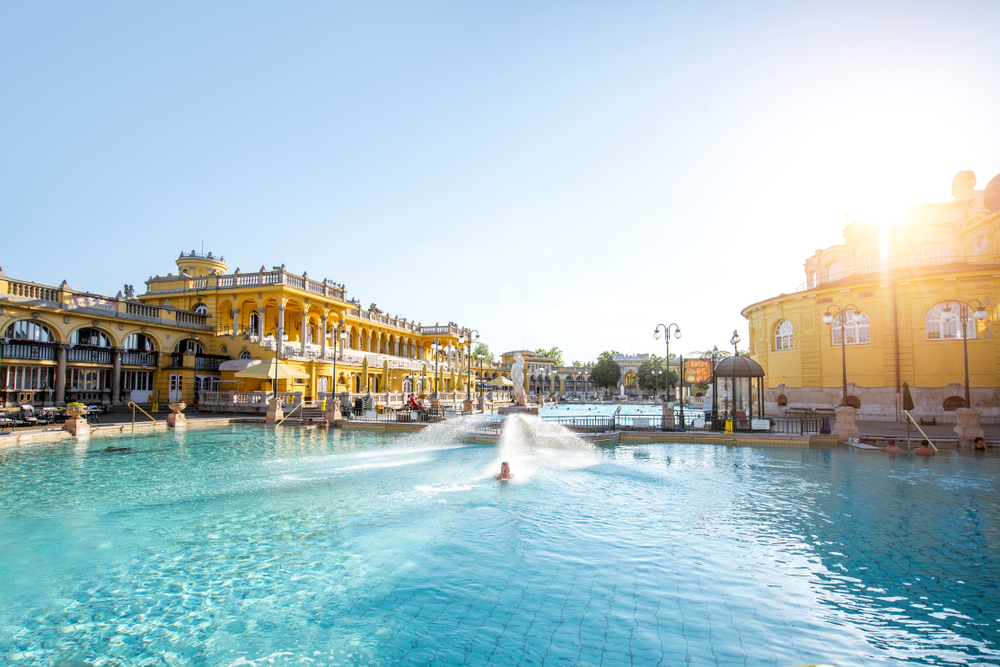
If you want a unique experience in Budapest, try out the thermal baths. Budapest is known for its thermal baths and has a rich history of thermal bath culture. Budapest has over 100 hot springs and has been known as the “City of Baths” since Roman times.
The thermal baths are not only a place to relax and unwind, but they also have many health benefits. The hot water is rich in minerals such as calcium, magnesium, and sulfur, which can help alleviate joint pain, improve circulation, and even help with skin conditions.
There are many thermal baths in Budapest, each with unique features. Some are more traditional, while others are more modern and luxurious. Some of Budapest’s most famous thermal baths include the Széchenyi Thermal Bath, the Gellért Thermal Bath, and the Rudas Thermal Bath.
The Széchenyi Thermal Bath is the largest thermal bath in Europe, located in the City Park. It has 18 indoor and outdoor pools and is known for its beautiful neo-baroque architecture. The Gellért Thermal Bath is located in the Gellért Hotel and is known for its Art Nouveau architecture and stunning mosaics. The Rudas Thermal Bath is one of the oldest thermal baths in Budapest and is known for its Turkish-style bath.
When visiting a thermal bath, following the rules and etiquette is important. You must shower before entering the pools, and wearing a swim cap is recommended. Some thermal baths have separate pools for men and women, while others have mixed pools. It’s important to respect the rules and customs of each thermal bath.
Overall, the thermal bath culture in Budapest is a must-try experience. Whether you’re looking to relax and unwind or improve your health, Budapest’s thermal baths have something for everyone.
History at the House of Terror Museum
As you explore Budapest, you may come across the House of Terror Museum, a building that was once the headquarters of the Hungarian Nazi Party and later the Soviet secret police. This museum is dedicated to remembering the atrocities committed by these regimes and the victims who suffered under their rule.
As you enter the museum, you’ll be greeted with exhibits that tell the story of Hungary’s turbulent past, including the country’s role in World War II and the Soviet occupation that followed. The exhibits are arranged chronologically, starting with the Nazi occupation and ending with the fall of communism in 1989.
One of the most striking exhibits is a replica of the prison cells used by the secret police, complete with the original torture devices and interrogation rooms. This exhibit is a powerful reminder of the brutality behind closed doors during the Soviet era.
Throughout the museum, you’ll see photographs, artifacts, and personal accounts from those who lived through these dark times. The museum’s goal is to educate visitors about Hungary’s past and ensure that the victims are never forgotten.
Visiting the House of Terror Museum can be a sobering experience, but it’s important. It serves as a reminder of the dangers of authoritarian regimes and the importance of standing up for freedom and democracy.
Unravel the mystery behind the Shoes on the Danube Bank memorial
As you walk along the Danube River in Budapest, you may come across a somber memorial known as the “Shoes on the Danube Bank.” The memorial consists of 60 pairs of shoes made of iron, scattered along the bank of the river. But what is the story behind this mysterious installation?
The Shoes on the Danube Bank is a tribute to the Jewish victims of the Holocaust in Hungary. During World War II, the fascist Arrow Cross Party took control of Hungary and began a campaign of terror against the Jewish population. Many Jews were forced to remove their shoes before being shot and thrown into the Danube River, their bodies carried away by the current.
The memorial was created in 2005 by film director Can Togay and sculptor Gyula Pauer to honor the memory of these victims. Each pair of shoes represents different people, from men and women to children and infants. The shoes are made of iron to symbolize the tragedy’s weight and its lasting impact on Hungary and the world.
The Shoes on the Danube Bank serves as a powerful reminder of the atrocities committed during the Holocaust and the importance of never forgetting the victims. It is a place of reflection and mourning, but also a call to action to work towards a world where such tragedies never happen again. As you stand among the shoes, you can’t help but feel the weight of history and the responsibility to ensure that we never forget the past.
Visit Matthias Church and Fisherman’s Bastion for panoramic views
If you’re looking for a breathtaking view of Budapest, then you should definitely visit Matthias Church and Fisherman’s Bastion. These two landmarks are located in the Buda Castle District and offer panoramic views of the city.
Matthias Church is one of the oldest and most beautiful churches in Budapest. It was built in the 14th century and has been restored several times over the years. The church is known for its stunning architecture, colorful roof tiles, and intricate decorations. When you visit Matthias Church, you can climb to the top of the tower for an amazing view of the city.
Fisherman’s Bastion is a neo-Gothic terrace that was built in the late 19th century. It offers a panoramic view of the Danube River, the Parliament building, and the Pest side of the city. The terrace is named after the fishermen defending this part of the city during the Middle Ages. Fisherman’s Bastion is a popular spot for tourists and locals alike, and it’s a great place to take photos.
Matthias Church and Fisherman’s Bastion are located in the Buda Castle District, a UNESCO World Heritage Site. The district is home to several other historic landmarks, including the Royal Palace and the Hungarian National Gallery. You can easily spend a whole day exploring this part of the city.
If you’re planning a trip to Budapest, then you should definitely visit Matthias Church and Fisherman’s Bastion. These two landmarks offer stunning city views and are a must-see for any tourist.
Conclusion
If you’re a food lover, Budapest is a must-visit destination. From street food to traditional dishes, cooking classes to food markets, there’s something for everyone. The Great Market Hall is a must-visit spot where you can try out unique foods that are specific to Budapest. You can also enjoy dried smoked sausage, which is a typical topping on bread with sour cream cheese and garlic spread.
Chimney cakes, which are sweet snacks, are also a popular choice among locals. Originally from Transylvania, they have become a Hungarian favorite, especially during Christmas markets. You can also try out pálinka, a Hungarian spirit originally designed to cure the emperor’s stomach. It’s made of extracts from 50 different herbs.
Apart from the food scene, Budapest is a city with a rich history and culture. You can take a Tuk Tuk tour to explore the city and see the difference between Buda and Pest. Liberty Square Park is an exciting place to visit, with its monuments and memorials that commemorate Hungary’s past.
In conclusion, Budapest is a city that has a lot to offer. It’s a hidden gem for food lovers and a great place to explore history and culture. If planning your next vacation, consider Budapest your next destination.
For More Info : https://greenbookglobal.com/
Is Budapest a welcoming destination for Black travelers?
Yes, Budapest is generally a welcoming and inclusive city for travelers from diverse backgrounds, including Black travelers. Hungarians are known for their hospitality and friendliness towards tourists.
How diverse is Budapest in terms of culture and community?
Budapest is a melting pot of cultures and has a diverse community. While the majority of the population is Hungarian, you’ll find various international communities and expats living in the city, contributing to its multicultural atmosphere.
Will I find Black-owned businesses or establishments in Budapest?
Yes, Budapest has many Black-owned businesses, including restaurants, shops, and cultural centers. Exploring these establishments can offer you unique experiences and opportunities to connect with the local community.
What should I be aware of regarding cultural norms and etiquette?
Hungarians value politeness and respect in their interactions. While the city is generally open-minded, knowing local customs and greetings can help you establish positive connections with the locals.
How can I connect with the local Black community in Budapest?
There are social media groups and forums where you can connect with other Black travelers and residents in Budapest. Attending cultural events, visiting community centers, and engaging in local gatherings are great ways to connect with like-minded individuals.
Is it safe for Black travelers in Budapest?
Budapest is considered a safe city for travelers, including Black travelers. However, like any other major city, it’s essential to remain vigilant and take standard safety precautions, such as keeping your belongings secure and being aware of your surroundings.
How diverse is the culinary scene in Budapest?
Budapest offers a diverse culinary landscape, with a variety of international cuisines to explore. You can savor traditional Hungarian dishes as well as dishes from various parts of the world.
How can I respectfully embrace and appreciate Hungarian culture during my visit?
Engage in local activities, try traditional dishes, and participate in cultural events. Learning a few Hungarian phrases and greetings can also show your appreciation for the local culture. Remember to be respectful and open-minded during your interactions with the locals.